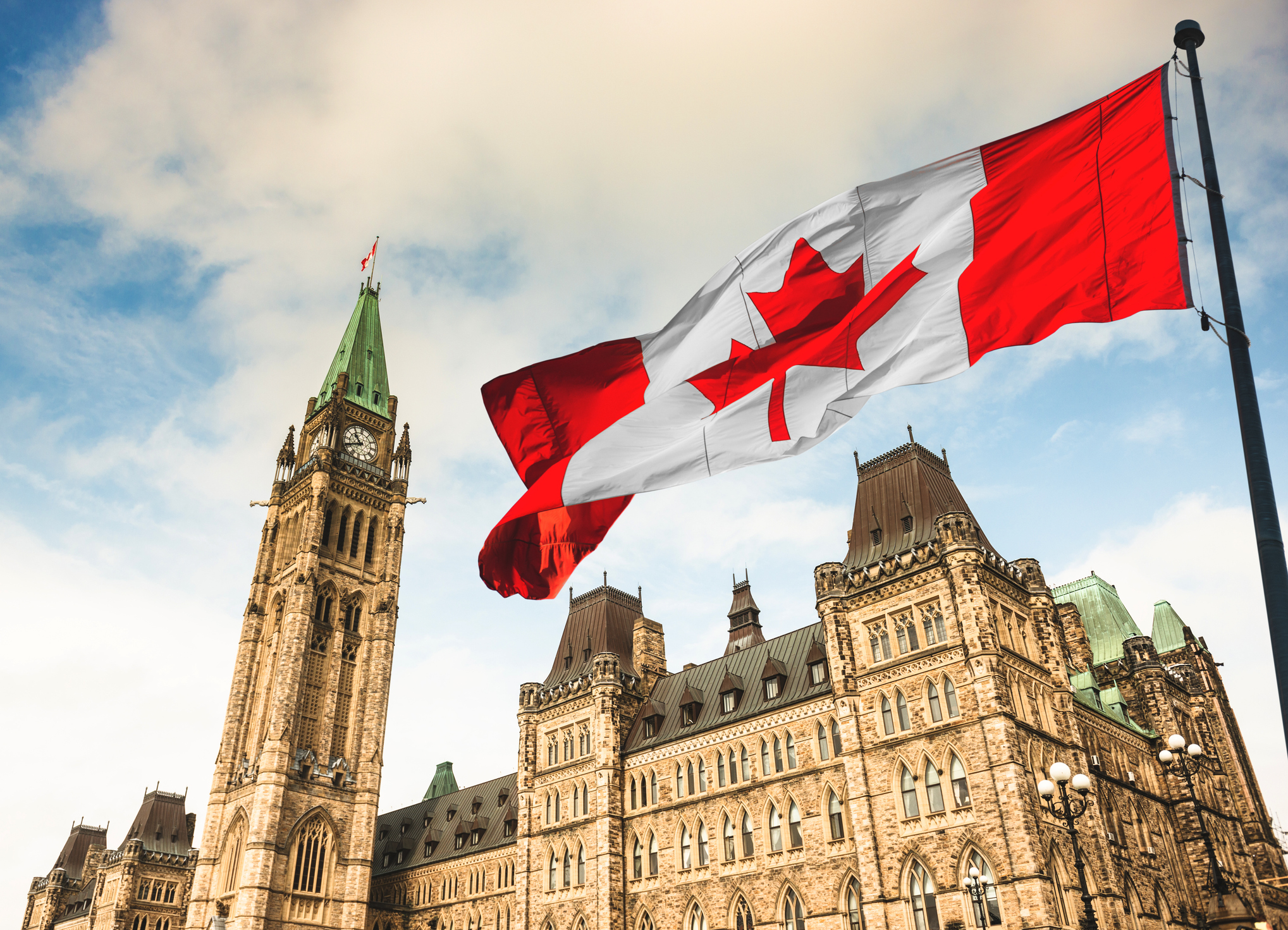April 13, 2022
Legislative Review Secretariat
Tobacco Control Directorate
Controlled Substances and Cannabis Branch
Health Canada
Re: Legislative Review of the Parliamentary Consultation on Tobacco and Vaping Products Act (TVPA)
The stated goal of Health Canada is to reduce the population prevalence of combustible tobacco use to less than 5% by 2035. This goal is aspirational and unattainable without a strategy to transition current cigarette smokers to lower risk nicotine products. These newer technologies, including vaping/e-cigarettes, heat-not-burn, and snus, should be promoted as life-saving technologies that can lead to the elimination of combustible tobacco consumption and dramatically reduce suffering, deaths and health care costs. Instead, we find ourselves in a bizarre situation where governments and public health organizations are trying to discredit, oppose and even ban these innovations.
The TVPA discussion paper primarily focuses on youth vaping. This is consistent with the narrative that has been constructed by governments, public health officials, and popular media. We have created a “moral panic” around youth vaping that has led directly to blatant misinformation and prohibitive legislation that does not reflect reality. The incorrectly named EVALI (E-cigarette or Vaping-Use Associated Lung Injury) outbreak that killed 48 young people in the United States during 2019/2020, contributed to this panic and we are still dealing with the fall out. Unfortunately, it will never be possible to correct the public perception that vaping nicotine caused these deaths even though it was due to illicit THC vaping pods that contained Vitamin E acetate. We have been left with the irrational perception among smokers and non-smokers alike that the health risks from vaping are no different than smoking. As an initial corrective step, there needs to be a clear statement by Health Canada that EVALI was not caused by vaping nicotine and that commercial vaping products have not been associated with serious lung disease. Included in this should be a statement on “vaping-related popcorn lung” which has never been conclusively documented but has somehow been propagated by public health organizations and medical practitioners.
The public has also been inundated with information around the “youth vaping epidemic” with no real context around what these numbers mean. Certainly, youth experimentation with vaping peaked when sleek new devices like JUUL became available, but this initial spike in youth vaping has fallen off precipitously. There are a small proportion of youth who are dependent on nicotine as a result of vaping, but these are the same young people who would likely be smoking cigarettes. Any concerns that youth who vape would then turn to cigarettes, the so-called gateway effect, has been disproved as youth smoking rates are at an all-time low despite the
previous surge in vaping. This “youth vaping crisis” must also be put in some context. In comparison with alcohol use, cannabis use, illicit opioid and stimulant use, sexually transmitted infections, teen pregnancy, depression and suicidal ideation, youth vaping should be low on the list of public health priorities. Public health appears to have lost interest in these other serious issues to focus on vaping sensationalism.
To make regressive policy decisions that are based on over-blown youth vaping concerns means that these technologies are less accessible, affordable, and attractive to the 4.2 million Canadian smokers who are dying from cigarettes. By focusing almost exclusively on primary prevention in young people, chronic cigarette smokers, the population that has the most to gain from vaping, have been ignored. Principles of harm reduction, that have been generally supported in other areas of public health, have been disregarded. It should be acknowledged that the slow annual reduction in smoking prevalence seen across Canada is driven primarily by the 48,000 deaths that are attributed to smoking. Generously funded “quit-smoking” programs that rely on nicotine replacement in the form of patches, gum and lozenges, poorly tolerated oral medications, and behavioral therapies, contribute much less to declining smoking prevalence.
The TVPA review provides a critical opportunity to reimagine vaping and other low risk nicotine delivery systems as a central pillar in reaching the 2035 smoking prevalence targets. Instead of tightening restrictions on access, the policies should be aimed at expanding access. Every policy decision should be predicated on making vaping more attractive than cigarettes. This can be done without promoting the uptake of vaping for non-smoking youth and adults.
The TVPA must go beyond the 5 narrow discussion areas outlined in section 4 of the review document. There are other more important policy and legislative issues that would expediate a reduction in smoking among Canadians. These issues include:
- Gag legislation
- Taxation on vaping products
- E-liquid flavours
- Nicotine and nicotine concentration caps
- Access points
- Engaging with the tobacco and vaping industry
1. Gag legislation
Governments and public health officials should ensure that the public are provided with the best available information to improve their health. The government’s current position on vaping is conflicted and dishonest. In fact, discussion area D states that the TVPA should “Prevent the public from being deceived or misled with respect to the health hazards of using vaping products”. While the health risks from vaping are low, they must be compared to smoking. There is not a credible person in tobacco control who does not accept the fact that vaping is less hazardous than smoking. The renowned Public Health England report from 2015 that claimed that e-cigarettes were 95% safer than cigarettes has never been retracted and over the past 7 years there has been no scientific evidence to change this estimate. After over a decade of use in Canada, not one person has died directly from vaping nicotine. But despite this, it is illegal for sales associates, retailers or manufacturers to make any claims about the comparative health risks.
Imagine if this approach was used in other areas of public health. What if condom manufacturers were not legally allowed to tell people that condoms are protective against HIV transmission because they can break? What if bicycle retailers were not allowed to tell people that helmets were more protective than baseball caps because you could still get a head injury? What if car dealers were not allowed to tell customers that air bags prevented deaths because you could still die in a car crash. These examples are all based on relative risk when compared to the known risks of the alternative. Likewise, vaping information should be based on a comparison with smoking cigarettes.
The gag rule must be lifted for retailers and manufacturers. This legislation is forcing people to hide the truth. This is especially problematic when the goal should be to encourage smokers to transition away from cigarettes. Smokers need to know the chemicals that they are exposed to and the relative levels of exposure when compared with vaping. Smokers need to know that there is no evidence or plausible mechanism that would link vaping to lung cancer. Smokers need to know that nicotine does not cause coronary artery disease. Providing this basic comparative information is not only consistent with other public health messaging but is a core government obligation. People must know the truth about vaping in order to make informed choices. Legislation that prevents the disclosure of safety information has a huge impact on informed decision making.
2. Taxation on vaping products
Despite the government’s stated commitment to reduce cigarette consumption in the long-term, the short-term tax revenues generated from cigarette sales is a disincentive to act quickly. The taxation of cigarettes is at a tipping point where further tax increases are not likely to impact the consumption of cigarettes. It has been shown that high taxes are a disincentive to youth cigarette purchasing but there are limits to the impact of endless tax increases and there are already legal barriers to underage cigarette purchasing. For adult smokers, higher taxes are not a big disincentive for quitting but have other unintended consequences. For many low-income Canadians this means purchasing substandard products through the illicit market. In many communities with lower socio-economic conditions, smoking rates are high and most of the cigarettes come from “illegal” sales which are not taxed at all. For people who continue to purchase their cigarettes from retail outlets, a disproportionate amount of their income goes to cigarettes at the detriment to food, clothing, childcare, housing, and other essentials. As most cigarette smokers come from lower socio-economic situations high cigarette taxes are really a tax on the poor.
Taxing vaping products at a similar or even higher rate to tobacco is counter intuitive. Why would a relatively safe nicotine delivery product be taxed the same as a deadly one? Currently, the cost of vaping is about half the price of retail cigarettes. This is a critical incentive for smokers who are considering a switch to vaping. The tax rate should always incentivize the safer product.
Taxation rates on vaping products should always be lower than cigarettes and this can be used as an important incentive to switch.
3. E-liquid flavours
Flavours are perhaps the most misunderstood issue in vaping. Flavours are vilified in youth vaping debates and manufacturers have been accused of using flavours to attract young people to their products. Flavour bans are a favorite knee-jerk reaction to any conversation around youth vaping in Canada and some provinces have already introduced flavour bans. When compared with flavoured alcoholic beverages and energy drinks, the fixation on flavoured e-liquids is hard to justify. While flavours are indeed an incentive for young people to try vaping, they are also
essential to smokers who have transitioned to vaping. Over 80% of all vaping purchases are for flavoured e-liquids. Flavours make vaping nicotine enjoyable and satisfying and are critical to encouraging smokers to quit cigarettes.
Perhaps one of the most ill-advised ideas is to only offer tobacco flavoured e-liquid. Smokers do not want to use tobacco flavoured vapes. It reminds them of the cigarettes that they have left behind. Survey after survey among people who vape have shown that tobacco is not a desirable flavour and if tobacco flavours become the only available flavour many ex-smokers may go back to cigarettes.
Banning flavours from commercially available and regulated products will predictably lead to the wide-spread use of home-made or unregulated flavoured e-liquids. It is very easy to add flavours to open-tank vaping systems or to produce flavoured pods for closed systems. Most people who are already vaping using flavours will seek out alternate sources. Tragically there will be some people who return to cigarettes because they can no longer access flavoured e-liquids and are not willing/able to access non-commercial sources.
4. Nicotine and nicotine concentration caps
Nicotine use will continue for the foreseeable future. As more is discovered about the medicinal properties of nicotine, it is likely that it will grow in popularity and the number of therapeutic indications will expand. In the real world, many people with mental health conditions smoke cigarettes because they find the effects helpful. They should not stop nicotine but they should stop smoking.
One of the main advantages of vaping is being able to know and control the nicotine content. This allows people to tailor the nicotine concentration in order to satisfy their nicotine dependency. For those who decide to wean off nicotine altogether, vaping makes a gradual reduction in nicotine concentration easy to plan out. For those smokers who are considering vaping there is a difference in the desired or required nicotine content between someone who smokes two packs per day versus someone who smokes ½ pack per day. People will be driven to get the amount of nicotine that they require.
Putting restrictions on nicotine concentration reduces the ability to individually tailor the required nicotine content. Ifsmokers are forced to use e-liquids with low nicotine concentration, they will need to take more puffs and use more e-liquid. For many heavier smokers, this will prove to take too much effort and they will find that vaping nicotine cannot match the nicotine that they receive through heavy cigarette use. This can also result in dual use (concurrent cigarette and vaping) in order to get the nicotine that they desire/require.
5. Access to Vaping Products
There should be no locations where cigarettes are available and low risk vaping products are not. Allowing cigarettes to be sold at gas stations and convenience stores and at the same time restricting the sales of vaping products to speciality shops is not sensible and will not provide the incentive or opportunities for people to switch. People need to have a choice and cigarettes should never be in a more favorable purchasing position. Proposals to have all tobacco and nicotine products in age-restricted locations only could potentially work but would be difficult to enforce. Proposals to restrict vaping products to pharmacies or through doctor prescriptions would clearly create an unfair advantage for cigarette sales. In all policy decisions around regulating access, lower-risk products should always be favoured.
6. Engagement with the Tobacco and Vaping Industry
The history of the tobacco industry is full of deception and lies with decades of smoking promotion having caused a global health crisis. The worldwide disease trajectories of cancer, heart disease and lung disease have been transformed because of the outsized impact of cigarette smoking on people’s health. The elimination of combustible tobacco consumption should be the number one priority in global health and tobacco companies have rightfully been vilified and isolated. Public health agencies, academic institutions, and governments have
excluded tobacco companies from any contact or perceived influence. Governments have successfully sued these companies in order to recoup some of the massive health care costs required to care for people who smoke. Ironically, governments continue to profit from taxation on tobacco products, allow companies to manufacture cigarettes, and generously support communities that rely on the tobacco industry for employment. In some countries tobacco manufacturing is state owned and operated.
Despite this history, the relationships with tobacco companies must be reconsidered with the introduction of safer nicotine products. It is now counter-productive to isolate tobacco/vaping companies from tobacco control conversations when they are changing their business models to promote safer nicotine products. Most of the major companies have invested heavily in new technologies and are pursuing strategies that will phase out combustible tobacco production. Whether the motivation is to improve the health of their customers or simply to increase profits through new methods of nicotine delivery is secondary. Without their collaboration the transition away from combustible tobacco will be much slower or may not happen at all. There are many examples where companies who produce “dangerous” products are seen as part of the solution. We know that oil and gas companies must change their business model in order to reduce global warming and governments are eager to support their transition to less carbon intensive production. Car manufacturers that contribute to air pollution and climate change are being forced to manufacture electric cars. Forestry companies who are destroying critical forest habitats are being incentivized to pursue sustainable forestry practices. These transformations would never happen if we simply stopped talking to the companies who are causing harm. If governments and public health organizations are not working with tobacco and vaping companies to incentivize and accelerate the elimination of combustible tobacco products, they are not really interested in global tobacco control.
Conclusions
The TVPA must recognize that the only way to achieve Health Canada’s stated goal of reducing smoking prevalence to less than 5% by 2035 is to get cigarette smokers to switch to safer nicotine delivery methods. The moral panic around youth vaping in Canada has been a huge distraction and has shifted the focus away from promoting vaping as a far safer way to deliver nicotine to people who smoke. Canada could be a global leader in eliminating combustible tobacco use but this cannot happen unless we embrace harm reduction and focus on the promotion of safer nicotine delivery technologies.
Submission by:
Mark Tyndall MD, ScD, FRCPC
Public Health, Drug Policy, and Harm Reduction Consultant
Public Health and Infectious Diseases Specialist
Former Director of the BC Centre for Disease Control and Deputy Provincial Health Officer. Internationally recognized for contributions in harm reduction and author of over 300 academic publications. Committed to reducing the harms of substance use through community engagement and to the implementation of common-sense regulation.
Perceived Conflicts of Interest:
I have received payment for consultation around harm reduction from VITA (Vaping Industry Trade Association). I do not represent VITA and this submission has not been viewed or endorsed by VITA. The views are my own and are in no way connected to VITA.
I have received payment for consultation around harm reduction from RBH (Rothmans, Benson and Hedges Inc.) I do not represent RBH and this submission has not been viewed or endorsed by RBH. The views are my own and are in no way connected to RBH.
I have received payment for consultation around harm reduction from CVA (Canadian Vaping Association). I do not represent CVA and this submission has not been viewed or endorsed by CVA. The views are my own and are in no way connected to CVA.




